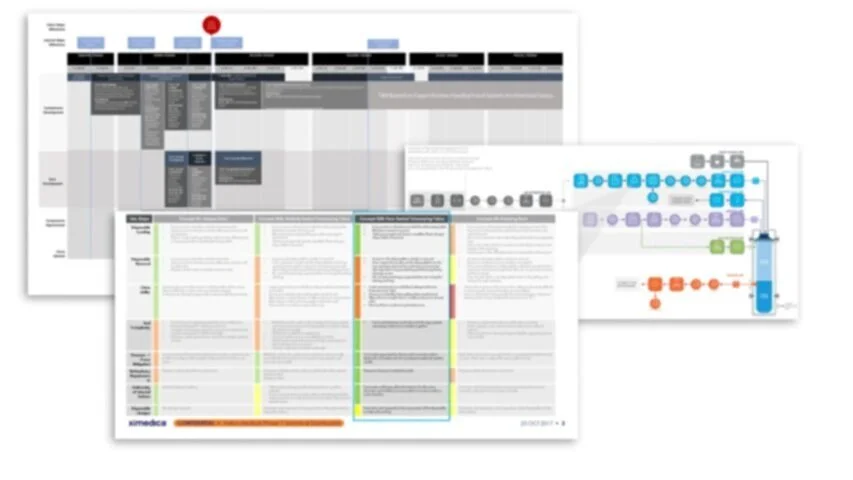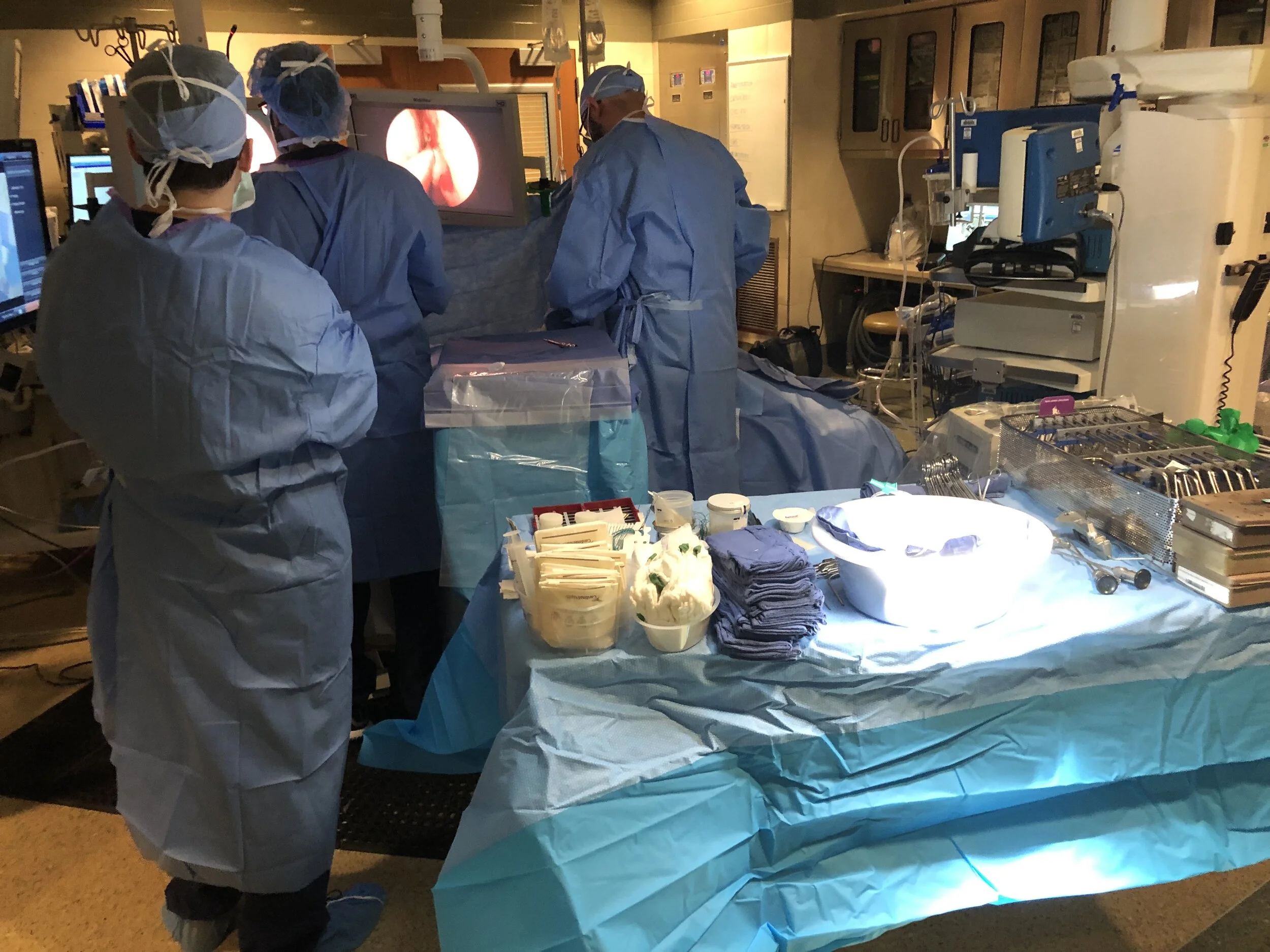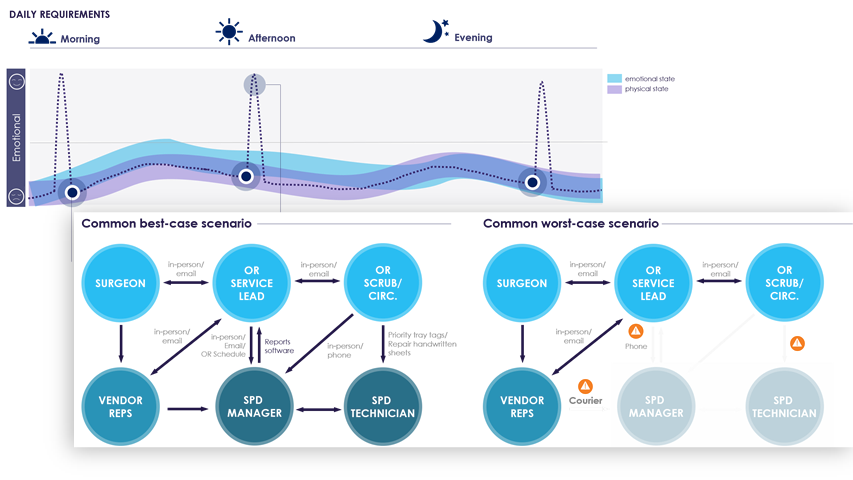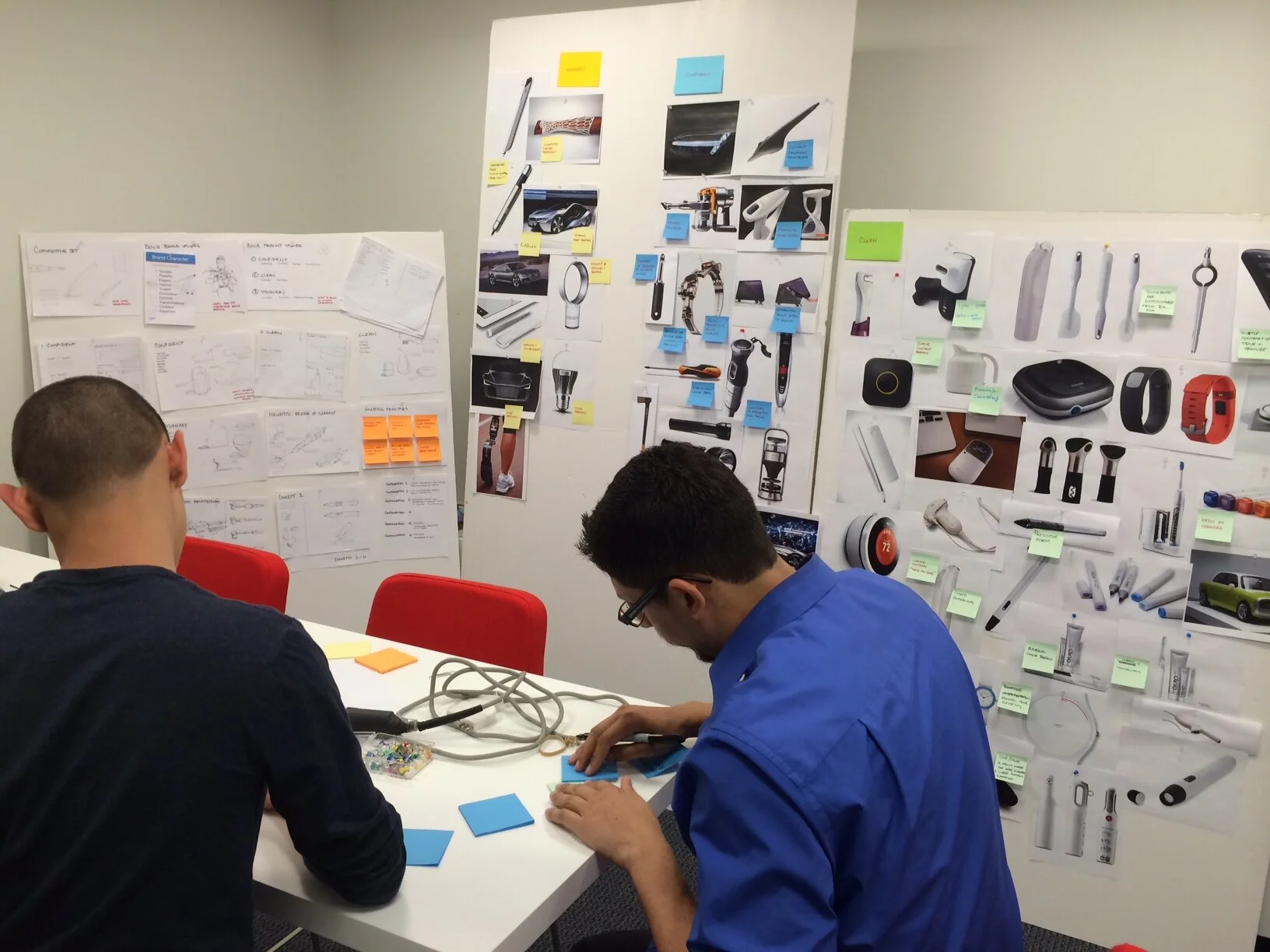Design Leadership
Advocating for design while navigating the complexities of variable technologies and user needs. Using systems level thinking to look at the big picture provides the ability to make informed decisions while untangling the problems that arise while weaving a cohesive story that aligns the goals of the team.
Program Strategy
Developing timelines, matrices, and program schematics provides predictability and guidance required to understand the value and inputs the design team provides. A senior designer should provide this early on in order to gain alignment on user needs and program goals.
Contextual Inquiry
Observing users in the environment they will be experiencing your system or service is critical to creating the foundation and focus of a project. These types of learnings cannot be found anywhere else, so it is critical that a senior designer has these skills in order to understand the workflow, workarounds, and pain points in order to be the advocate for the user when working with inter-disciplinary teams.
Design Research and Analysis
Understanding the physical, mental and emotional experiences of the user drives adoption and optimizes correct use. Using quantitative and qualitative data collection techniques, a designer can paint a picture of when and where a user has the highest chance for success. Once this information is gathered, it is the designers responsibility to translate and communicate that information in a digestible manner for alignment and acceleration of product development.
Concept Generation
Visually communicating thought is the most important hard skill for a designer. Translating a conversation, or sharing multiple ideas across a spectrum, facilitate meaningful dialogues and provides alignment rather than bottlenecks. It is equally as important for a designer to be able to facilitate concept generation sessions to empower others to be able to share their ideas and provide the appropriate collaboration of usability, feasibility, and business requirements.
Prototyping + Testing
Prototypes enhance dialogues, provide alignment/ recalibration, and enhance the decision making process. They allow you to evaluate things in 3D that cannot be accomplished in 2D (touchpoint location, weight, size in different hands, etc.). Designers provide this value by being able to work in different mediums ranging from low fidelity foam core to rapid prototyping. Utilizing Human Factors Engineers and Users to evaluate creates a better product and overall richer experience for the user.
Interdisciplinary Teamwork
Nothing is created in a vacuum, and no designer completes anything alone. Although it is critical to understand how to work within the discipline, it is just as critical to be able to speak the language, and understand key drivers for all surrounding disciplines. This philosophy provides space for meaningful dialogue, reduce conflict, and enhance collaboration.
High Fidelity Assets
Creating refined 2D assets such as renderings or digital sketches provide the ability to make decisions at key milestones (business opportunities, mid-phase reviews, phase close, etc.) and help teams understand exactly what to expect before making financial or business decisions. Design visualizations also provide aspirational goals for the greater team to work towards.







